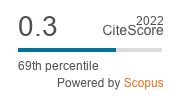- Home »
- Issues »
- 13/1 - Spring 2008 »
- Articles »
The Evolutionary Concept of Human Death
Abstract
The natural sciences reveal the existence of a constant process of cosmic evolution, in which new forms of matter emerge. The continuity of the nonorganic and biological evolutionary processes, their assignment to the laws of nature, as well as the fact that the appearance of a human being constitutes their culmination, all this shows that a human being is an element of the material structure of the world. From the evolutionary point of view, it could be argued that a human being is “the ultimate form of life,” a very interesting but, in many respects, still very mysterious idea.
Keywords
Cite this article
Świeżyński, Adam. “The Evolutionary Concept of Human Death.” Forum Philosophicum 13, no. 1 (2008): 119–26. doi:10.35765/forphil.2008.1301.09.
Bibliography
Bovet, Théodore. Mensch sein. Tübingen: Katzmann, 1977. Bollnow, Otto Friedrich. “Die philosophische Anthropologie und ihre methodischen Prinzipen.” In: Philosophische Anthropologie heute: elf Beiträge, edited by Roman Roček and Oskar Schatz, 19–36. München: Beck, 1972. Teilhard de Chardin, Pierre. Oeuvres de Pierre Teilhard De Chardin. Vol. 5, L'Avenir de L'Homme. Paris: Seuil, 1959. Teilhard de Chardin, Pierre. Oeuvres de Pierre Teilhard de Chardin. Vol 6, L’Énergie humaine, Paris: Seuil, 1962. Heberer, Gerhard. Der Ursprung des Menschen; unser gegenwärtiger Wissensstand. Stuttgart: Fischer, 1968. Roček, Roman, and Oskar Schatz, eds. Philosophische Anthropologie heute: elf Beiträge. München: Beck, 1972. Toit, D. A. du. “Anthropology and Bioethics.” Ethics and Medicine 10, no. 2 (1994): 35–42. Wojciechowski, Tadeusz. “Z ewolucyjnej problematyki śmierci człowieka.” Studia Philosophiae Christianae 15 no.1 (1979): 81–97. Wojciechowski, Tadeusz. “Der Tod innerhalb einer evolutiven Weltanschauung.” Anzeiger für katholische Geistlichkeit 85, no.10 (1976): 340–352.




